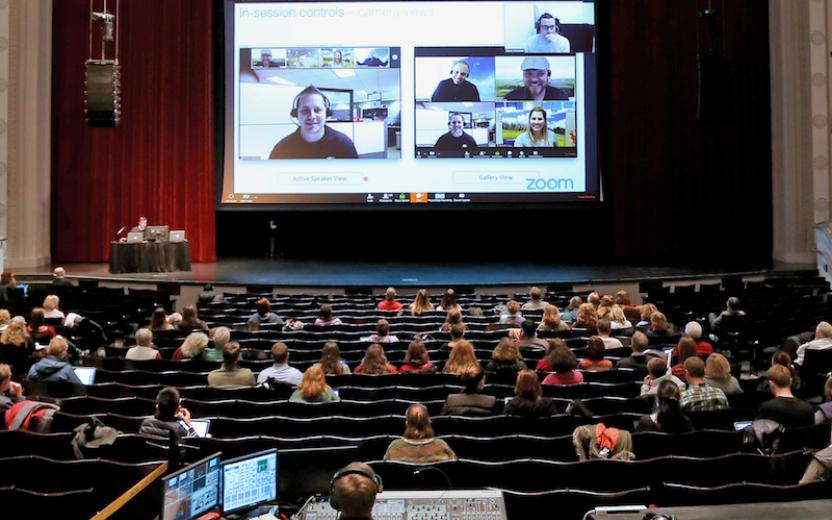Meetings vs. Webinars
A meeting is a Zoom event where one person is the host and all other participants generally have equal footing. The host can share hosting responsibilities with other participants. Any participant can share their screen, subject to the host's security settings. A webinar, on the other hand, is a more controlled environment, where hosts, co-hosts, and panelists share audio, video, or screen with participants whose interaction is limited to features like polling and Q&A. For additional detail, visit What's a Zoom Meeting? What's a Zoom Webinar?
AI Companion
Zoom AI Companion gives hosts and participants shareable meeting summaries and next-steps lists, “highlight reels” in recordings, catch-up meeting questions for people joining a meeting late, and more.
Licenses
Acceptable Use Guidelines
Zoom hosts and participants... | Zoom hosts should... |
- Must not create or store recordings, transcripts, or machine-generated summaries that involve discussion of confidential or sensitive information, which includes:
- high-risk or regulated data (e.g., personnel information, social security number, credit or debit card numbers, driver’s license number, visa or passport number, bank account number, personal health-related information, personal financial information, education records (FERPA), personally identifiable information (PII), etc.);
- privileged legal matters;
- or other confidential or sensitive information (e.g. personnel matters, security matters, protected research information, birth dates).
- Must not share recordings (video or audio), transcriptions, or machine-generated materials from Zoom meetings that may contain confidential and sensitive information as described above.
- Must not share links for scheduled meetings that will include confidential and sensitive information, on social media or other online public forums, particularly a link that includes the passcode embedded. Only distribute meeting links to specific individuals who should attend. This is good practice for any scheduled meeting not intended for public consumption.
| - Review Zoom account settings in detail before use. Understand the available recording, transcription, machine-generated content, and other features, and be aware of all content you will be creating.
- Actively inform participants whenever recordings, transcripts, or AI tools have been turned on. Explain to participants the purpose for recording, transcribing, or using AI tools in a meeting. Try to respect the wishes of participants who request disabling these tools.
- Review any machine-generated transcriptions carefully for accuracy before sharing.
- Know how to handle unwanted AI assistants or bots that may try to join meetings you host. See Strategies to Block AI Bots from Zoom Sessions for details.
- Know how to reduce the odds of unwanted attendees (“Zoombombers”) and how to remove them from a meeting. This is particularly important in meetings discussing sensitive or confidential information. These measures include an understanding of how to require participants to authenticate when joining, how to use the meeting waiting room, how to lock a meeting, and how to remove a participant from a meeting.
Recommendations for Zoom security settings can be found at Checklist: Keep Your Zoom Meeting Secure.
|
When using Zoom or Zoom AI Companion, you should be familiar with Zoom Acceptable Use: Key Terms and Content.
Get Zoom Help
Request support using the Zoom service support form.


Comments?
To share feedback about this page or request support, log in with your NetID